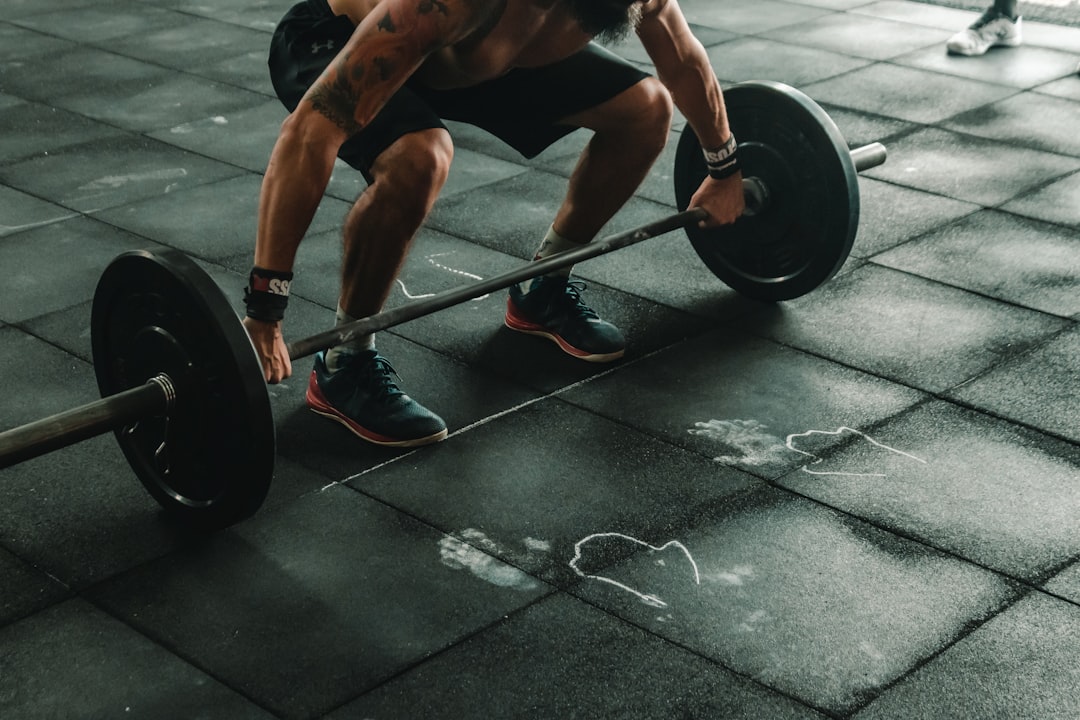The triceps brachii, commonly referred to as the triceps, is a large muscle group located at the back of the upper arm. It consists of three distinct heads: the long head, the lateral head, and the medial head. Each of these heads plays a crucial role in the extension of the elbow joint, which is essential for various upper body movements.
The long head originates from the scapula, while the other two heads originate from the humerus. Together, they work in unison to facilitate actions such as pushing, lifting, and throwing, making them vital for both athletic performance and daily activities. Understanding the anatomy of the triceps is essential for anyone looking to enhance their upper body strength.
The triceps account for approximately two-thirds of the muscle mass in the upper arm, which means that developing this muscle group can significantly impact overall arm size and strength. Furthermore, a well-developed triceps can improve performance in various exercises, including bench presses and push-ups, as it contributes to the force exerted during these movements. Therefore, a comprehensive understanding of the triceps is fundamental for anyone aiming to sculpt their arms effectively.
Key Takeaways
- Understanding the triceps: An overview of the muscle group
- The importance of strong triceps in your fitness routine
- The ultimate triceps workout: Exercises for sculpting and toning
- Tips for proper form and technique when working the triceps
- Incorporating resistance training for maximum triceps development
The Importance of Strong Triceps in Your Fitness Routine
Triceps and Compound Movements
This stabilization is particularly important in compound movements like bench presses and overhead presses, where the triceps assist in maintaining proper form and preventing injury. A strong triceps foundation can enhance overall performance in these lifts, allowing individuals to lift heavier weights and achieve better results.
Functional Fitness and Daily Activities
Moreover, strong triceps contribute to functional fitness, which is essential for everyday activities. Tasks such as pushing a heavy door, lifting objects overhead, or even performing daily chores require adequate triceps strength. By focusing on developing this muscle group, individuals can improve their overall functional capacity, making daily tasks easier and reducing the risk of injury.
Prioritizing Triceps Training
Thus, prioritizing triceps training within a fitness regimen not only enhances aesthetic appeal but also promotes practical strength that translates into real-world benefits.
The Ultimate Triceps Workout: Exercises for Sculpting and Toning
To sculpt and tone the triceps effectively, a variety of exercises should be incorporated into your workout routine. One of the most popular exercises is the triceps dip, which can be performed using parallel bars or even a sturdy bench. This exercise targets all three heads of the triceps and can be modified by adjusting body angle or adding weights for increased resistance.
Another effective movement is the skull crusher, which involves lying on a bench and lowering a barbell or dumbbells towards the forehead before extending back to the starting position. This exercise isolates the triceps and allows for focused muscle engagement. Additionally, push-ups are an excellent compound exercise that engages multiple muscle groups while placing significant emphasis on the triceps.
Variations such as diamond push-ups or decline push-ups can further target this muscle group. Incorporating cable exercises like triceps pushdowns or overhead extensions can also provide constant tension throughout the movement, promoting muscle growth and definition. By combining these exercises into a comprehensive workout plan, individuals can effectively sculpt their triceps while ensuring balanced development across all heads of the muscle.
Tips for Proper Form and Technique When Working the Triceps
| Exercise | Proper Form and Technique |
|---|---|
| Tricep Dips | Keep your back straight, lower your body until your elbows are at a 90-degree angle, and then push back up. |
| Tricep Pushdowns | Stand with your feet shoulder-width apart, keep your elbows close to your body, and fully extend your arms down. |
| Overhead Tricep Extension | Hold a dumbbell with both hands, keep your elbows close to your head, and fully extend your arms overhead. |
Maintaining proper form and technique during triceps exercises is essential for maximizing effectiveness and minimizing injury risk. For instance, when performing triceps dips, it is crucial to keep your elbows close to your body and avoid flaring them outwards. This alignment ensures that the triceps are engaged throughout the movement while reducing strain on the shoulders.
Similarly, during skull crushers, it is important to control the weight and avoid letting it drop too quickly; this helps maintain tension on the triceps and prevents unnecessary stress on the elbows. Another key aspect of proper technique is ensuring that movements are performed through a full range of motion. For example, when executing pushdowns with a cable machine, fully extend your arms at the bottom of the movement before returning to the starting position.
This full extension not only maximizes muscle engagement but also promotes flexibility in the joints involved. Additionally, focusing on breathing—exhaling during exertion and inhaling during relaxation—can enhance performance and endurance during triceps workouts.
Incorporating Resistance Training for Maximum Triceps Development
Resistance training is fundamental for achieving maximum development of the triceps. By progressively increasing resistance through weights or resistance bands, individuals can stimulate muscle growth effectively. For instance, incorporating heavier weights into exercises like bench presses or overhead presses will engage the triceps more intensely as they assist in these compound movements.
Additionally, utilizing different forms of resistance—such as free weights, machines, or bodyweight exercises—can provide varied stimuli that promote balanced muscle development. Moreover, periodization is an effective strategy for optimizing resistance training outcomes. This involves cycling through different phases of training that focus on varying rep ranges and intensities.
For example, one might spend several weeks focusing on lower rep ranges with heavier weights to build strength before transitioning to higher rep ranges with lighter weights to enhance endurance and hypertrophy. By strategically incorporating resistance training into your routine, you can ensure continuous progress in your triceps development while preventing plateaus.
The Role of Nutrition in Supporting Triceps Muscle Growth
Nutrition plays a pivotal role in supporting muscle growth and recovery, including that of the triceps. Consuming an adequate amount of protein is essential for muscle repair and synthesis following workouts. Foods rich in protein such as lean meats, fish, eggs, dairy products, legumes, and nuts should be prioritized in one’s diet to support optimal recovery and growth.
A general guideline suggests aiming for approximately 1.6 to 2.2 grams of protein per kilogram of body weight per day for those engaged in regular resistance training. In addition to protein intake, ensuring sufficient caloric intake is vital for muscle growth. A caloric surplus—wherein one consumes more calories than they expend—can provide the necessary energy for building new muscle tissue.
Furthermore, incorporating healthy fats and carbohydrates into your diet can support overall energy levels and performance during workouts. Carbohydrates serve as a primary energy source during high-intensity training sessions, while healthy fats contribute to hormonal balance and overall health.
Avoiding Common Mistakes and Injuries When Training the Triceps
When training the triceps, it is crucial to be aware of common mistakes that can lead to injuries or hinder progress. One prevalent error is neglecting warm-up routines before engaging in intense workouts. Failing to warm up properly can increase the risk of strains or tears in the muscle fibers.
A thorough warm-up should include dynamic stretches targeting the arms and shoulders to prepare these areas for exertion. Another common mistake is overtraining or focusing excessively on one muscle group at the expense of others. While it may be tempting to prioritize triceps workouts for aesthetic reasons, neglecting other muscle groups can lead to imbalances that increase injury risk and hinder overall performance.
It is essential to maintain a balanced workout routine that includes exercises targeting all major muscle groups while allowing adequate recovery time between sessions focused on specific areas.
Progression and Variation: How to Keep Your Triceps Workouts Effective
To ensure continued progress in triceps development, incorporating progression and variation into your workouts is essential. Progression can be achieved by gradually increasing weights or resistance levels over time as strength improves. For instance, if you can comfortably perform 12 repetitions of an exercise with a certain weight, consider increasing it by 5-10% to challenge your muscles further.
Variation is equally important in preventing plateaus and keeping workouts engaging. This can involve changing exercise selection—such as alternating between dips and close-grip bench presses—or modifying rep ranges and rest periods between sets. Additionally, incorporating different training modalities like supersets or circuit training can provide new challenges for your muscles while enhancing cardiovascular fitness.
The Benefits of Strong Triceps Beyond Aesthetics: Functional Fitness and Performance
While many individuals focus on developing strong triceps for aesthetic reasons, there are numerous functional benefits associated with this muscle group that extend beyond appearance. Strong triceps contribute significantly to overall upper body strength, which is essential for various athletic activities such as swimming, throwing sports, and weightlifting. Enhanced triceps strength allows athletes to generate more power during explosive movements like jumps or sprints.
Furthermore, strong triceps play a vital role in injury prevention by stabilizing joints during dynamic movements. For example, well-developed triceps can help protect against shoulder injuries by providing support during overhead lifts or activities that require pushing motions. Ultimately, investing time in developing strong triceps not only enhances physical appearance but also promotes functional fitness that translates into improved performance across various sports and daily activities.




